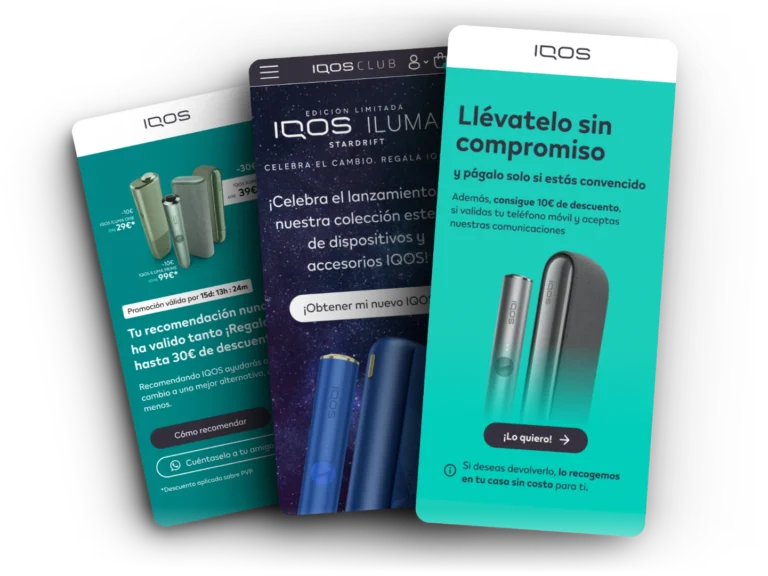Banking Experience Optimization
From Insights to Growth: Applied CRO in the Financial Sector
– Case Study –
Important notice
The project detailed in this case study was completed as part of my professional services at Flat 101. All information presented here is publicly available or has been approved for sharing by the client. The methodologies, processes, and systems discussed are standard practices in the field of design and development, adapted and applied to the specific requirements and constraints of this project. While I have made every effort to provide accurate and insightful information, some details may have been omitted or generalized to protect client confidentiality and comply with my non-disclosure agreement. This case study is intended for informational and educational purposes only. It should not be construed as an endorsement of any particular product, service, or company. If you have any questions regarding this disclaimer or the information presented in this case study, please don’t hesitate to contact me.
Introduction
A Multi-Market Banking Website
Santander is a global banking giant, and its Nordics division serves customers across Denmark, Sweden, Finland, and Norway. Each country has its own dedicated website and team, offering a range of financial products from consumer loans to credit cards.
As the Lead UX/CRO Designer for this project, I work within a specialized team focused on Conversion Rate Optimization (CRO). Our mission is to make it easier for customers to find the right financial solutions and complete their journeys online.
We do this through a combination of data analysis, design expertise, and carefully crafted experiments. It’s an ongoing collaboration with analysts, developers, and the client to create a seamless and successful banking experience across the Nordic region.
The Challenge
Optimizing a Complex Financial Ecosystem
Working with a large-scale banking institution like Santander Nordics presents a unique set of challenges for CRO:
Multiple Websites, Multiple Markets:
Each Nordic country has its own website, audience preferences, and regulatory requirements. Optimizing for these diverse needs requires both a nuanced understanding of local markets and a cohesive overarching strategy.
Balancing Digital and Offline Journeys:
While we focus on the digital experience, customer journeys often extend beyond the website. Getting a loan, for example, might involve an online application followed by in-person or phone interactions. CRO success depends on considering the entire customer journey, not just website clicks.
Demystifying Financial Products:
Banking terminology and complex product offerings can create friction for users. Our challenge was to simplify the decision-making process without sacrificing essential information and transparency.
Methodology
Data, Design, and the Science of CRO
At the heart of our CRO approach for Santander Nordics lies a powerful combination of analytical rigor, human-centered design, and continuous experimentation. We start by meticulously analyzing website data, user behavior, and best practices informed by behavioral science. This allows us to pinpoint improvement opportunities and craft focused hypotheses.
Our process can be distilled into these key steps:

We dive deep into analytics, heatmaps, and other tools to understand user behavior across the website’s key funnels (TOFU, MOFU, BOFU). This data reveals where customers encounter friction and where opportunities for improvement lie.
We don’t rely on data alone. Heuristic principles (established UX best practices) and an understanding of behavioral economics help us identify potential pain points and design solutions that resonate with users on a psychological level.


Based on our analysis, we develop clear, testable hypotheses about how changes to the website could improve conversion rates and the overall user experience.
Then, working closely with our team and the client, we prioritize experiments based on potential impact and available resources. This creates a strategic CRO roadmap for continuous improvement.
Execution
From Concept to Launch
Our CRO process for Santander Nordics emphasizes efficiency, collaboration, and a focus on results. We’ve honed our workflow to move seamlessly from identifying problems to implementing solutions and measuring their impact.
Here’s how it breaks down:
Cross-Functional Teamwork
We translate data-driven insights into actionable design improvements based on hypotheses. However, CRO success is a team effort, so we maintain open communication with analysts, developers, and the client team throughout the process to ensure a smooth implementation.
Agile Experiment Planning
We employ a customized Scrum framework to structure our experimentation sprints. This includes defining clear roles, regular sprint planning meetings and a collaborative approach to backlog management.
Our Kanban board features columns such as Backlog, Sprint, In Progress, Ready to Check, Active and Ready. In addition, to optimize the workflow within these main columns, we subdivide tasks as needed. This approach ensures a systematic process, clear accountability and effective tracking of the progress of each CRO experiment.
Test Documentation & Quality Assurance (QA)
Each experiment is carefully documented with a clear hypothesis, the proposed changes, and the metrics we’ll use to measure success.
Later, I meticulously oversee QA to guarantee that experiments are implemented accurately and function as intended on the live website.
Key Takeaways
Insights for Your Own CRO Success
The Santander Nordics project offers valuable insights for anyone looking to enhance their website’s performance through CRO:
1. Data is Your Guide:
Don’t make changes based on gut feeling. Analyze user behavior, heatmaps, and other data sources to pinpoint areas ripe for optimization.
2. Embrace Collaboration:
CRO thrives on teamwork. Partner closely with designers, developers, analysts, and stakeholders to achieve the best possible results.
3. Think Beyond the Click:
Optimize for the entire customer journey, even if parts of it happen offline. A seamless experience builds trust and loyalty.
4. Small Changes, Big Impact:
CRO rarely require a complete redesign. Targeted, hypothesis-driven changes can yield significant improvements.
5. Test, Learn, Iterate:
CRO is a continuous process. Experiment, analyze the results, and refine your approach over time.



